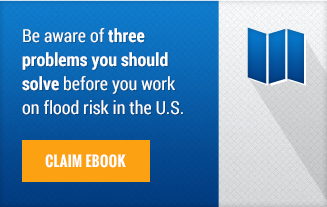AM Best and Target Markets (the Program Administrators Association) just put on their annual webinar exploring the state of program business.
Quickly, here is a primer on what “programs” are. Programs are when a carrier delegates underwriting of a well-defined type of coverage with very specific underwriting guidelines to independent underwriting groups typically known as Managing General Agents (MGAs) or Managing General Underwriters (MGUs). The carrier carries the risk, while the underwriting groups are the distribution network for the carrier. Lloyd’s of London does most of their US business through programs, but other big carriers (AIG, QBE, Zurich are a few that come to mind) have a wide offering of programs. A well designed program is a classic win-win, with the carrier collecting premium without the cost of sales and marketing the insurance products, and underwriters can sell coverages without bearing the risk.

Programs are interesting because they are the crucible in which many coverages are initiated and tested before becoming more broadly offered. The underwriters who bring programs to the market are known for their innovation and the field is full of start-ups. Most programs are built around non-admitted risks that require deep specialized knowledge to underwrite. Flood is a peril that fits well into a program.
The webinar is an hour long, and informative because the programs space is a microcosm of insurance in general. There were several topics of conversation that caught my attention, including the effect of the current capital surplus on programs (it’s enabling start-ups because there is more capacity and demand for risk) and how big data is being leveraged. There were two particular segments that I want to share here.
The first segment starts around 16:00 of the webinar. Melissa Meserve (AVP of Program Development at AIG) describes start-ups in the programs space:
Start ups are tough. I ask is this a great idea? Or is this a great idea supported by great analytics and very good data.
One of the main themes of The Risks of Hazard is the use of analytics to improve underwriting opportunity and results. Ms. Meserve’s statement of how analytics and data contribute to the success of underwriting organizations is reassuring.
The second segment was the highlight of the show. While outlining the metrics by which a designated underwriter is judged (submission activity, efficiency rate, hit ratios, premium volume, etc), Anthony Campisi (President and CEO of Glatfelter Insurance Group) segways from underwriting performance (programs depend on underwriting profit) to The Risk-Price Paradox, which he states thus:
I’m always amazed by the fact that (carriers) are willing to give their best price to the risks you know nothing about and charge more for the risks you currently write and have written for years, and then we wonder why our customers go shop us. It’s a dynamic in the business that never seems to go away.
Brilliant! It’s something I’ve wondered about, and to hear Mr. Campisi describe it means it’s a real thing.
This immediately brings to mind two topics much discussed in the trade pubs: the protection gap and cyber risk. In February, I blogged about when Hemant Shah (CEO of RMS) stated that he was worried about the risks that insurers can cover but aren’t, and not emerging risks like cyber. I didn’t realize it at the time, but that blog was also about the Risk-Price paradox. Insurers have a lot of data, analytics, and claims history on earthquake (to take one example), which means they have a pretty good grasp of what the risk should cost – and it’s not cheap. However, for risks “you know nothing about” like cyber (really…it is impossible to understand cyber risk so far) there is nothing to prevent prices to be as low as needed to sell the coverage.
This paradox is the result of a fundamental aspect of insurance – claims are the largest expense AND most reliable source of knowledge. In other words, the risks you know the least about are the risks on which you have not yet incurred the cost of claims…they’re the cheapest risks for a carrier. But as the claims pile up, the lessons are learned and the rates rise to a suitable level.
Insurance is full of paradoxes. And like most paradoxes, this one is a lesson that has been learned countless times, and needs to be learned again.

